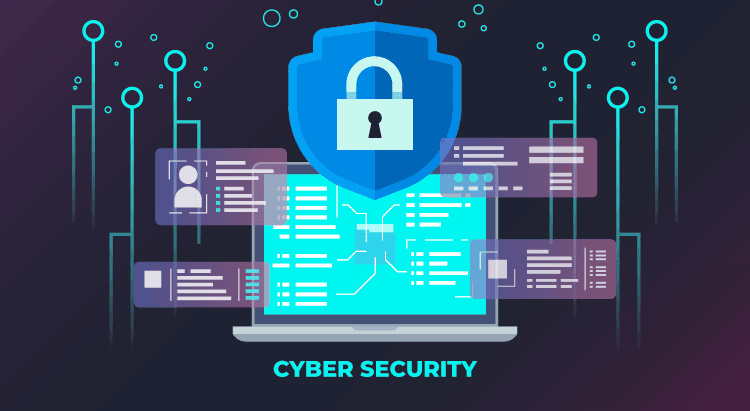If your business is like most, your company’s data is one of its most valuable assets. And when it comes to keeping that data safe and secure, cybersecurity should be top-of-mind. But what is cybersecurity exactly? Are there different types? How does it work? And why is IT important for business owners and managers to understand? In this blog post, we’ll break down the basics of cybersecurity so you can better protect your business from potential threats – both present and future. So, let’s dive in!
Cybersecurity (also known as IT security) is the practice of protecting your network and sensitive information from digital threats. This can include malicious attacks like malware, ransomware, social engineering attacks, and phishing scams as well as unauthorized access to sensitive information or system resources. To remain safe, organizations must maintain strong cybersecurity protocols that are regularly updated as well as the assistance of the latest security solutions.
Unfortunately, many businesses are not properly prepared for cyber threats. Hackers and malware start with a small security compromise to an unpatched or vulnerable user, network device, computer, browser, or cloud provider, and then linger inside a network. Over weeks, months, and even years, malware and hackers work to gain increasingly privileged access to harvest confidential information for resale. Ransom demands and system lockdowns may be the final stage of the attack, coordinated to force payment by eliminating any other viable option for the business owner.Hacking opportunities are constantly increasing. This is driven by ever-increasing network remote access, connected devices, and the increase in external cloud software tools with privileged usernames and passwords. For this reason, every business owner should carefully examine their cyber protection and their insurance coverage for cyber attacks and cyber liability.
There are multiple aspects to consider regarding cybersecurity, and it can be overwhelming to try to tackle them all at once. That’s why we’ve put together this list of the top 11 key elements of a strong cybersecurity strategy. By focusing on these areas, you can help ensure that your business is as secure as possible.
Your business may stand to gain new and better clients through certification and assurance that you are safeguarding data properly. BTI can help you determine the right best practice framework for you and also what you do and don’t need to do to comply within that framework based on what your business does. Our virtual CISOs (Chief Information Security Officers) can help you determine what does and doesn’t apply to you and then negotiate the compliance steps if you’re being asked to comply with a third-party certification. This will save you hours of time and thousands of dollars while ensuring you get the right amount of protection for your business.Ultimately, your business stands to gain increased security and an improved reputation, lower insurance costs, and better operational results by implementing best practice cyber policies and security tools and practices that we can help you develop. There are a variety of regulatory security frameworks you may already have been asked to comply with such as NIST, HIPAA, PCI, ISO, SOC, FEDRAMP, HITRUST, and CMMC 2.0.
Incident detection and response are foundational to cybersecurity. A good plan should include steps and tools and a vendor responsible for identifying, containing, and mitigating incidents, plus plans for recovery and post-incident review.
These systems are the foundation of your incident detection plan. They monitor the systems and software and receive alerts when certain events occur. By monitoring log data and receiving alerts when new vulnerabilities or security threats are detected, organizations can take prompt action to avoid damage.
Endpoint protection or endpoint security is in charge of protecting all of the devices that connect and exchange information with a computer network. Some examples of endpoint devices are laptops, computers, cellphones, tablets, servers, and embedded devices. Endpoint protection is designed to prevent unauthorized access to an organization’s systems and data while mitigating any security threats that may occur.
Also known as “pen-testing,” penetration testing the practice in which a white-hat hacker simulates a cyberattack on a company and its computer systems, networks, and applications. Many tools are used in pen-tests. BTI will customize penetration testing to meet your specific needs based on your unique situation, systems, and circumstances. We also offer ongoing pen-testing as a service.
Vulnerability management is the process of identifying, classifying, and addressing the vulnerabilities in your system and network. Having a vulnerability management plan is crucial for your cybersecurity strategy because it ensures that you maintain compliance with best practices and protect yourself from preventable vulnerabilities.
A BDR (backup & disaster recovery) plan and its system include procedures and technology for backing up and restoring entire systems and the data on them in the event of a disastrous occurrence. A cyber incident is one such occurrence, but these systems protect against accidental employee errors and many other types of business loss and interruption as well.
Business continuity is the process in which cybersecurity experts ensure that your company continues operating even in the event of a cyberattack or other disruptive events. BTI can help you implement the right tools to meet your needs and budget for business continuity.
Security awareness training is the process of educating your staff to avoid being duped by hackers and social engineering attacks. Good security awareness training will reduce the risk of human error and prevent employees and other users from inadvertently exposing the organization to cyber threats.
Encrypting your data will ensure that your sensitive data can only be read by authorized parties with the encryption keys to decrypt the data. Encryption is a standard best practice, but it needs to be implemented properly or else great harm can occur to data.







